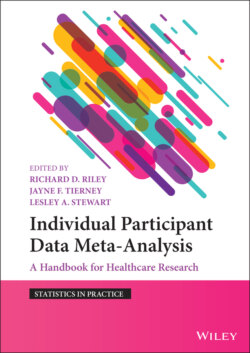Читать книгу Individual Participant Data Meta-Analysis - Группа авторов - Страница 73
4.2.3 Identifying and Screening Potentially Eligible Trials
ОглавлениеIdentification of eligible trials should be based on a systematic and comprehensive search of a number of sources, to ensure that all relevant trials are identified, using the same or similar methods to those employed in a conventional systematic review of existing aggregate data.92 However, IPD meta‐analysis projects often have a greater emphasis on searching grey literature sources, such as conference proceedings, as well as trial registers to identify unpublished trials, and any ongoing trials that may complete in time for inclusion in the IPD meta‐analysis.7,9,43 For example, in an IPD meta‐analysis project examining the effects of chemoradiation for cervical cancer,93 about 25% of the included trials were unpublished or published only as an abstract. Although there may be initial concerns about the quality of unpublished trials, this can be formally evaluated (Sections 4.5 and 4.6), and having the accompanying protocol, case report forms and trial IPD enables more detailed quality checking than when relying on aggregate data reported in publications. Indeed, a high standard of reporting does not necessarily correspond to high‐quality trial design and conduct, and similarly, some good‐quality trials can be quite badly reported.
Trial investigators should be asked whether they can supplement the provisional list of eligible trials, and additional appeals might also be made via project websites, social media or conference presentations. A summary of the sources searched for an IPD meta‐analysis of recombinant human bone morphogenetic protein‐2 for spinal fusion is given in Box 4.2.
